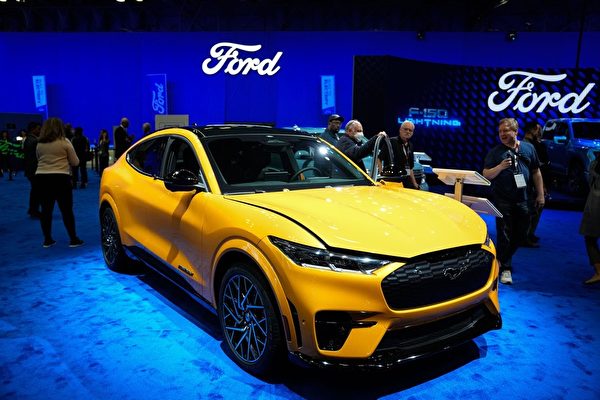Ford CEO Jim Farley expressed increasing confidence that Ford can be profitable in producing electric vehicles in the United States, thanks to government policies that help Ford compete fairly with low-cost Chinese competitors.
Despite lagging far behind Tesla, Ford remains the second-largest electric vehicle brand in the United States, credited to the popularity of models like Mustang Mach-E, F-150 Lightning pickup, and E-Transit commercial van. However, electric vehicles are still a loss-making business for Ford, with the company expecting electric vehicle losses to reach up to $5.5 billion this year.
Speaking at the Aspen Ideas Festival in Colorado on Friday, Farley mentioned that the next generation of electric vehicles will have lower manufacturing costs. This is partly due to incentives in the Inflation Reduction Act (IRA) for electric vehicles, among other government policies.
The Internal Revenue Service not only provides buyers of electric vehicles with up to $7,500 in tax credits but also offers incentives worth billions of dollars for car manufacturers producing electric vehicles and batteries domestically in the United States. Furthermore, the Biden administration imposes 100% tariffs on electric vehicles from China and has begun cracking down on any electric vehicle technology that could potentially track drivers. These measures aim to further prevent low-cost Chinese electric vehicles from entering the American market.
Farley told Axios media, “The government seems very serious about data privacy and electric vehicle autonomous driving technology, and they are developing various policies (to counter Chinese manufacturers).”
“With recent changes, I am more confident than ever that we will have a fair competitive environment with China in the United States,” he said.
The current tariff rate in the United States is 27.5%, but some models by BYD are priced below $11,000, much lower than similar models in the US. In addition, BYD recently surpassed Tesla to become the world’s largest electric vehicle manufacturer.
Chinese electric vehicles have now arrived at the doorstep of America, as electric vehicles imported from China currently account for 20% of new car sales in Mexico. Farley stated that it is only a matter of time before Chinese manufacturers establish plants in Mexico and begin shipping electric vehicles to the United States.
According to the requirements of the North American Free Trade Agreement, cars imported from Mexico must use a certain percentage of U.S.-made parts, which “are not free,” as noted by Farley.
Farley emphasized that Ford’s next generation of electric vehicles has two focuses: “We are now betting on an electric vehicle platform that can produce multiple models at an affordable cost, while also focusing on commercial electric vehicles.” He added that Ford has learned a lot from early electric vehicle customers who purchased Mach-E and Lightning.
“We have all the relevant data from drivers who have purchased cars, so we can see various data on Mach-E buyers. We can see how they use it, their charging status, where they drive electric vehicles, and how often they charge,” he said.
Ford’s research indicates that about half of Americans drive more than 150 miles only up to four times a year. This has led Ford to believe that the prospects for a cheaper short-range electric vehicle market are very promising.
Farley said the $7,500 tax credit is a “game-changer” for many entry-level electric vehicle buyers and added, “This is what customers tell us they need in an electric vehicle.”
Ford is adjusting its battery supply chain and production plans to leverage U.S. policies and reduce the prices of electric vehicles.
In a blog post before the Aspen Ideas Festival, Farley wrote, “We are in a global race, and the promotion of electric vehicles in the future will undoubtedly be a powerful force in the transportation sector. The United States cannot surrender its leadership in innovation to Beijing, Europe, or any other region.”

